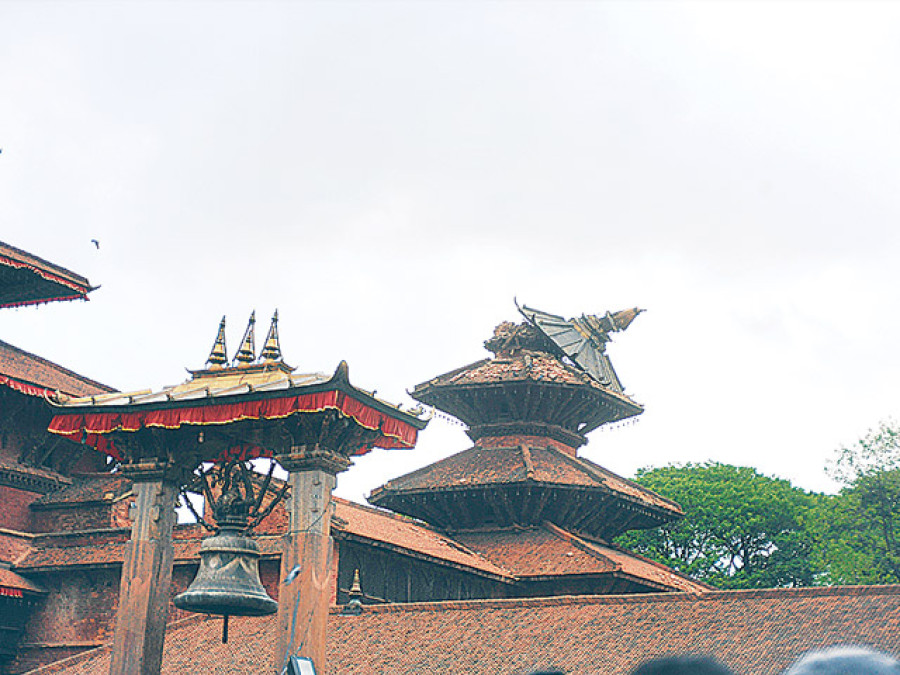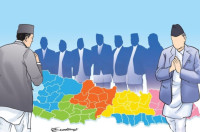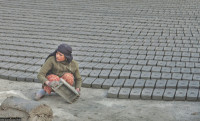Opinion
Help thy neighbour
As the virtual capital of the region, South Asians have a special responsibility towards Nepal
Zulfiqar Shah
The Great Earthquake in Nepal, which has killed over 6,000 people till date and reduced precious cultural heritage to rubble, has shocked and aggrieved not only the country but also the entire world.
Microcosm of the region
Nepal is a highly peculiar country, because the region’s ecosystem is dependent on its high Himalayan range. Any climatic disturbance in the ecosystem of this glacial highland could give rise to ecological disasters of a great order and wreak havoc in South Asian countries and their economies. Besides, Nepal is in an unavoidable geostrategic location as it connects India and China and has often played the role of a diplomatic corridor between its two neighbours.
If seen socio-culturally, one can also find currents that are Indian, Bhutanese, Bengali, Sindhi, Pashtun, and Balochi here. It has a trigonal linguistic matrix that includes Nepali people in the Indo-Aryan, Indo-Dravidian, Tibeto-Burman families of languages. Thus, it can be said that Nepal is a microcosm of South Asian culture. There is little need to mention that Nepal has long been the oldest
centre for Hinduism and Buddhism and which preserved the remnants of that magnificent heritage. Unfortunately, invaluable monuments and archaeological sites have been destroyed, which will indeed need to be repaired, not only in a bid to preserve history, but also to regulate Nepali economy, which has predominantly remained dependent on tourism. Need of rescue Rescue and relief are the two most important aspects of humanitarian crises management. It is particularly hard to undertake preliminary humanitarian actions in case of earthquakes when they hit mountainous terrain and valleys in the highlands.
Nepal, being the tallest nations among in highland topography, bears little capacity for undertaking operations out in the mountains. So the scale of disaster, and the country’s inability like many other developing countries in carrying rescue operation itself, has further worsened the situation. No doubt, the Indian Army’s initiatives, in association with the Nepali Army, helped rescue many victims. Nepal’s neighbours, and other Asian and Western countries, have already announced their assistance to the devastated nation. The UN has also appealed for humanitarian aid to initiate operations.
However, it seems that the whole process of receiving aid and channeling it for relief and rehabilitation will take a while. Therefore, as in cases of previous experiences of humanitarian interventions made in the wake of natural calamities, Nepal needs three step initiatives—interventions before international aid-based initiatives; relief and rehabilitation by international donor agencies and multilateral interventions; and sustainable rehabilitation. Building Nepal’s capacity to cope with any future calamities will be unavoidable and the most important initiative.
Sustainable humanitarianism
Experiences from across the world are testament that the best initiatives by the international humanitarian community when it comes to natural calamities, like in Haiti, have had to face issues of sustainability in the rehabilitation process. Even after developing sustainable models, there remain valid questions about the sustainability of such interventions. What exactly will sustainability mean for Nepal in the post-disaster situation? This is a tough question, especially for non-Nepalis, given the country’s mountainous terrains where the mode of livelihood has mainly remained urban labour and the services sector that is mostly based on tourism with additional value of kitchen gardening for urban poor, rain cultivation in the valleys and hillocks, and the cottage industry.
Since the scale of destruction has been very high and as a number of heritage icons have either been destroyed or damaged, sustainable rehabilitation for Nepal, particularly in its urban hubs and heritage centres, will ultimately have to be connected with the economic revival of the country. This particular aspect of Nepal’s revival will not only be associated with victims’ sustainable livelihood and appropriate housing but state-of-the-art reconstruction of historical monuments and revival of its tourist hubs.
Nepal needs integrated planning for sustainable relief and rehabilitation with unavoidable connectivity for economic and infrastructure revival. Required skills, experts, and a broader range of volunteers and human assets is what Nepal will need along with relief materials, rehabilitation of infrastructure, and a considerable amount of state-to-state assistance as well as humanitarian aid.
Some countries have announced assistance to Nepal while others are still thinking. Nepal requires support from citizens across the world. South Asians have a particular responsibility towards the people of Nepal. This is the best time for South Asian civil societies to contribute from their pockets for their Nepali brothers, sisters, and children. It is high time for a large number of skilled volunteers to contribute to the ecological capital of the region and the virtual capital of South Asia.
Shah is a stateless Sindhi refugee journalist, activist, and analyst




 12.12°C Kathmandu
12.12°C Kathmandu










